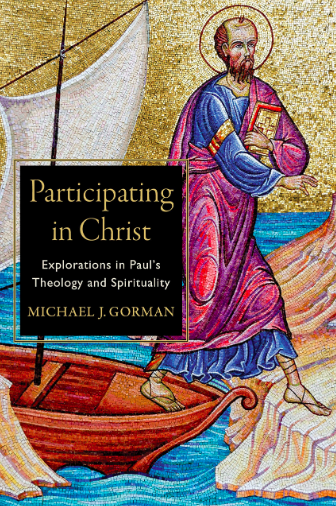Michael Gorman forms the discussion well:
In the previous chapter we took seriously Paul’s claim in 1 Corinthians 2:2 that he had decided to know nothing except the crucified Messiah, and we saw that for Paul (and for those who consider Paul’s letters Christian Scripture) the cross is both Christophany and theophany, both ecclesiophany and anthrophany. That is, the cross reveals the identity of Christ, of God, of the church, and of true humanity. But what about the resurrection? Did Paul not also stress the resurrection of Christ in, for example, 1 Corinthians 15? And did he not speak of not only dying but also rising with Christ in Romans 6? So is life in Christ cross-shaped or resurrection-shaped? That is the question before us regarding Paul’s understanding of participation in Christ. (my emphasis)
This from his new book  Participating in Christ: Explorations in Paul’s Theology and Spirituality (#ad).
Participating in Christ: Explorations in Paul’s Theology and Spirituality (#ad).
He poses the same discussion then as questions:
Is it adequate to focus on the “cruciform” character of participation in Christ? Or, in other words, what happened to the resurrection and its implications for Christian practice? Is participating in Christ not also resurrection-shaped—that is, “resurrectiform” or “anastiform” [sic, anastasiform?] (a term based on the Greek word for resurrection, anastasis) ?
Gorman, a master NT exegete especially in Pauline texts, outlines his answer here:
… cruciform participation in Christ is also, paradoxically, participation in Christ’s resurrection, as already stated. On the other hand, I will insist that we must maintain Paul’s emphasis on the cross and therefore grant the word “cruciform” a certain priority. Therefore, rather than using a term like “resurrectiform” in conjunction with “cruciform,” I will argue that we need a different term that better captures the crucifixion-resurrection dynamic, or dialectic, of participation in Christ according to Paul. As we will see, this contention is not merely a minor episode of “wrangling over words” (2 Tim. 2:14), but a significant exegetical and theological claim about the substance of Paul’s theology and spirituality—and their contemporary significance.
Gorman’s thesis then is that the resurrection life of the Christian is cruciformity because cruciformity is suffused with resurrection. The cross is the pattern of life while the resurrection is the power of that life. The church, then, is faithful to the resurrection when it is cruciform.










